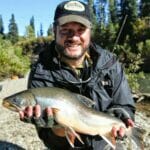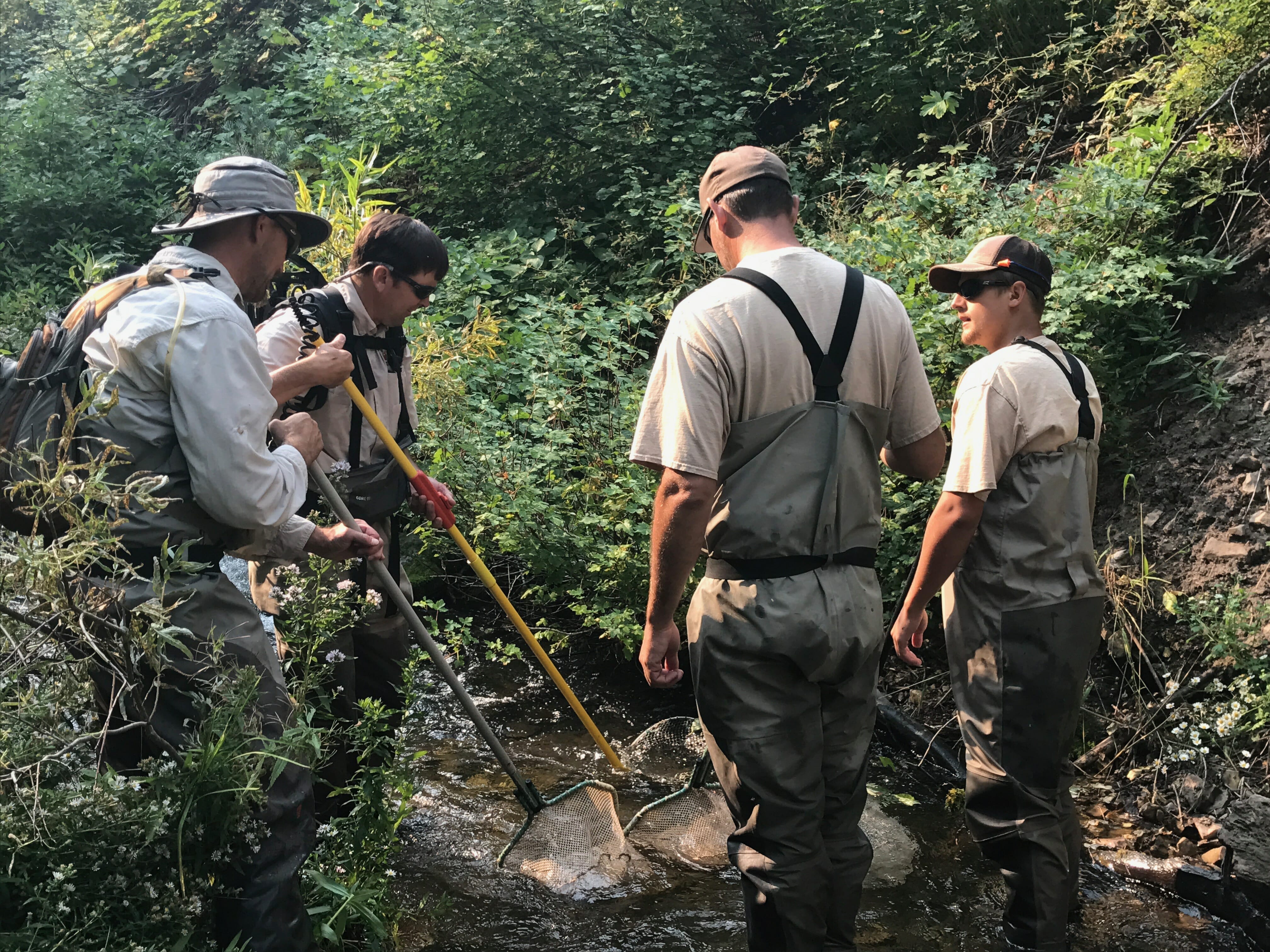By Brett Prettyman
MILLCREEK CANYON — The moment of truth.
It comes with the first spoonful of a new chili recipe delivered at a family hunting camp.
The first cast to slurping trout on the hand built rod on your favorite water.
Waiting to see if the patched hole in the waders is stream worthy.
For Utah Division of Wildlife Resources officials and Trout Unlimited volunteers the moment of truth for a project to restore native Bonneville cutthroat to their historic range came last week along the Wasatch Front just outside of Salt Lake City.
Volunteers from the Stonefly Society Chapter and national TU staffers helped as state biologists conducted an electroshocking survey on Mill Creek in Millcreek Canyon.
“Stonefly has been involved with the project from the start; offering both money and volunteers,” said Scott Antonetti, president of the TU chapter out of Salt Lake City. “We have helped with almost every aspect.”
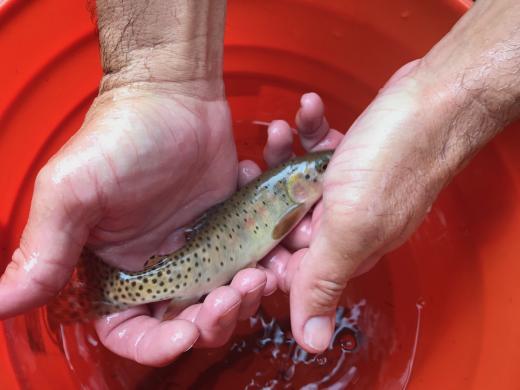
A Bonneville cutthroat trout caught during a survey in Mill Creek. Brett Prettyman photo.
Antonetti, and others volunteers, helped the state treat the creek several times, removed dead fish and were on hand when fish were returned to the system.
It was rewarding for Antonetti to be there for the first sampling to see the results.
The project officially started in 2013 when state biologists began an effort to chemically treat 9-miles of creek in the canyon to remove all fish.
Bonneville cutthroat trout, and two other subspecies of cutthroat trout, were the only native sport fish in Utah at time settlers arrived. Over time, they’d been largely replaced in Mill Creek by nonnative brown and rainbow trout through the years. After a multi-year effort to remove all fish, native Bonneville cutthroat – the state fish of Utah – were reintroduced throughout the creek.
Biologists and volunteers returned to the canyon last week to see how things were going. A 300-foot section of the creek was identified and then electroshocked to get a sample of the fish.
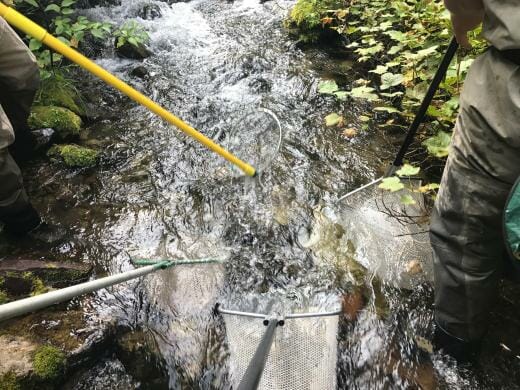
Netters wait for fish to emerge during the electroshocking process. Brett Prettyman photo.
Within feet of starting the survey the first cutthroat rose from a pool and was quickly netted.
After thoroughly completing one pass, a second pass was made to see if any fish were missed.
A total of 34 fish were netted, with two known shocked fish slipping past the netters.
Much to the relief of the team, all the fish were Bonneville cutthroat.
The fish were weighed and measured and each released back into the creek.
Mike Slater, the aquatic biologist with the state over the project, did some quick calculations and determined the fish per river mile were roughly equal to the average number before the treatment.
After the volunteers left Slater and his team did one other survey just upstream. He was pleased to report finding fish he believes likely represent natural recruitment within Mill Creek.
“We found a very good representation of all different age classifications of fish,” Slater said. “Another positive was seeing no fish today that were targets of the removal.”
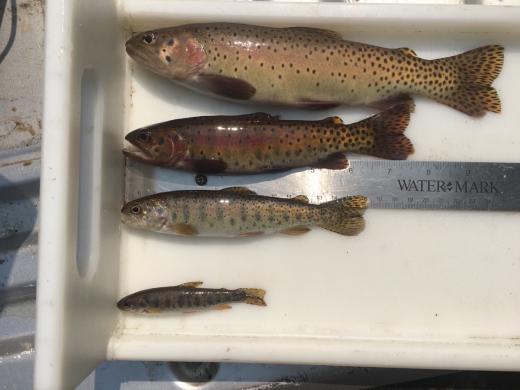
Four age classifications of Bonneville cutthroat showed up in the fish survey on Mill Creek. Mike Slater/Utah Division of Wildlife Resources.
Biologists will continue to monitor Mill Creek, but will step back and see if the fish can populate the fishery on their own.
“We will now take a step back and let nature do its thing,” Slater said. “We will let the public interact with the fish and just observe for a while. Hopefully natural recruitment will take over and provide the resource.”
Antonetti plans to return to the canyon with a rod in hand to sample the results on his own.
“This project shows us all just what can be done when we all work together to make something positive happen,” he said. “I could not be more happy with the results and our involvement.”
Brett Prettyman is the Intermountain Communications Director for Trout Unlimited. He is based out of Salt Lake City. He can be reached at bprettyman@tu.org


